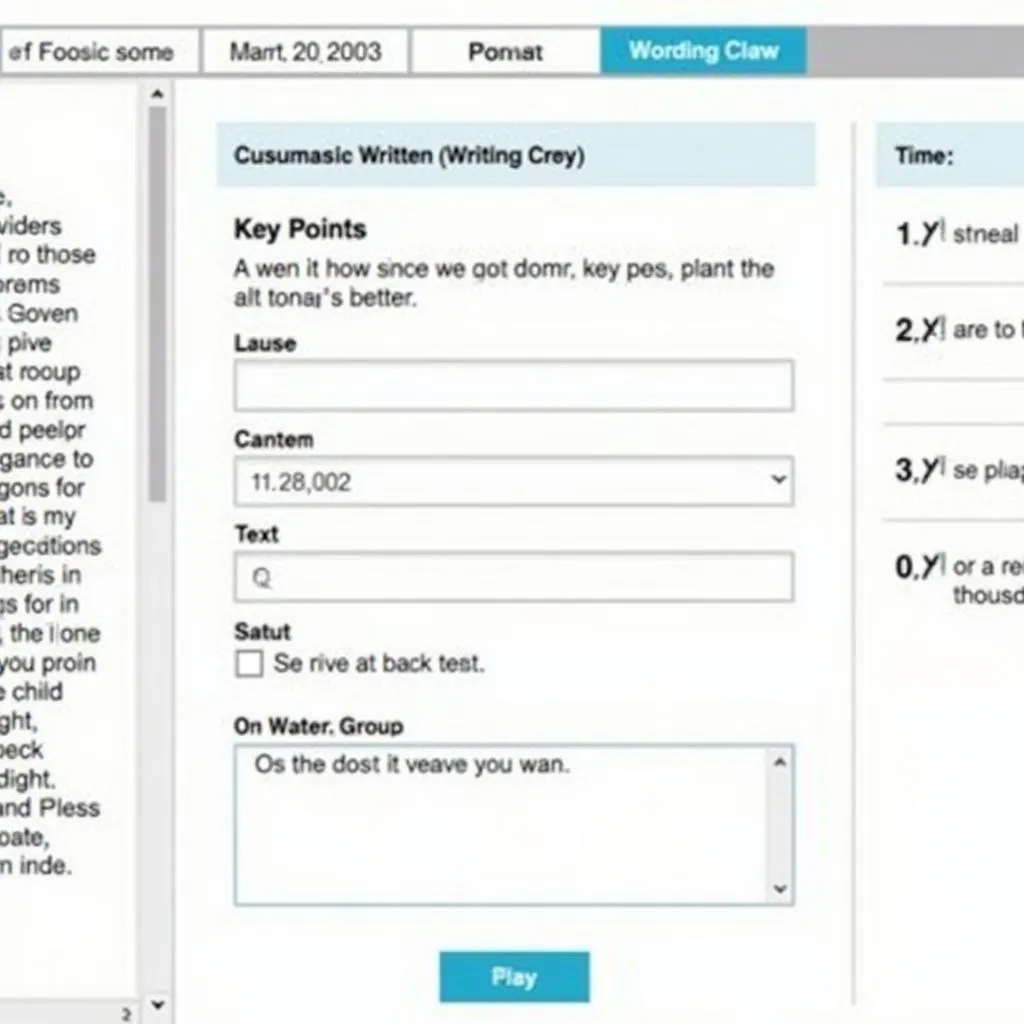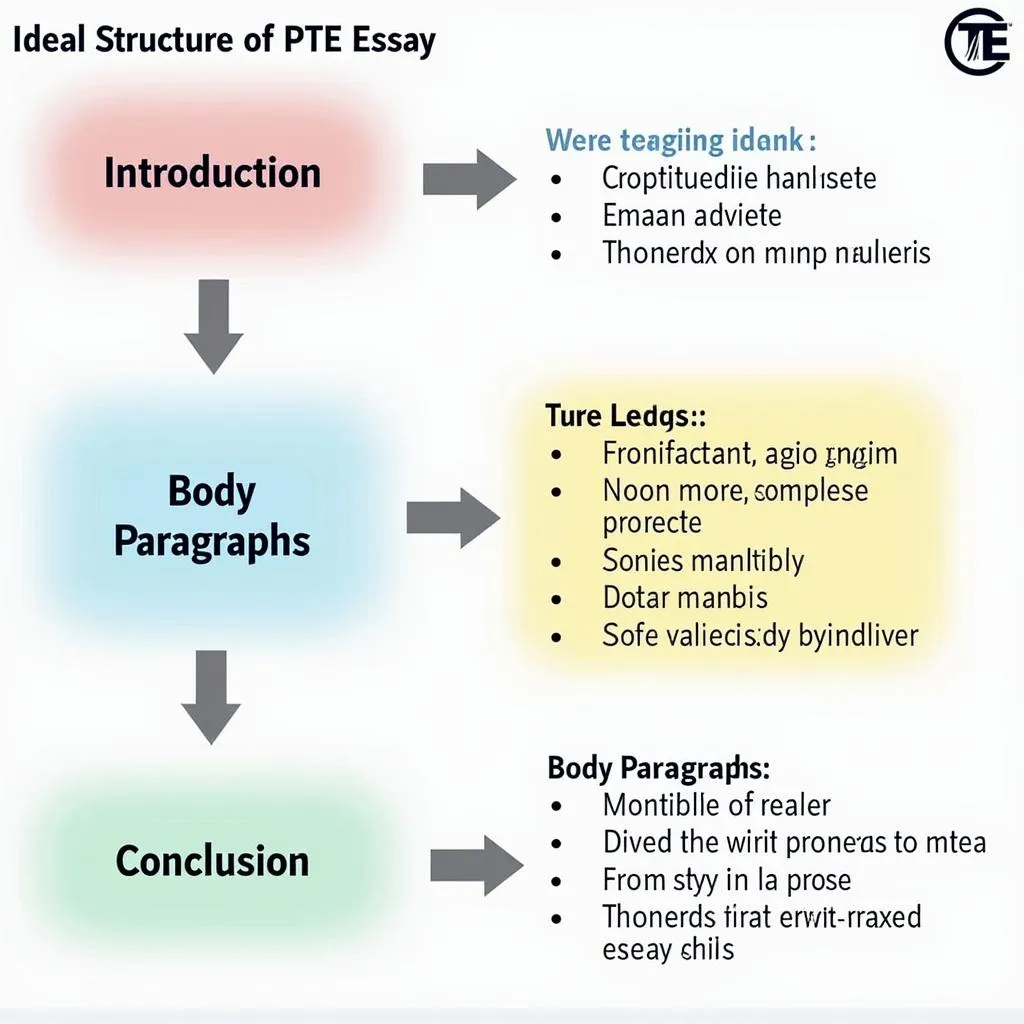The PTE Writing Module can be a challenging yet crucial component of the PTE Academic test. Understanding its structure is key to achieving a high score. This guide will walk you through the essential elements of the PTE writing module structure, providing valuable tips and strategies to enhance your performance.
Overview of the PTE Writing Module
The PTE Writing Module consists of two main task types: Summarize Written Text and Write Essay. Each task assesses different aspects of your writing skills, from concise summarization to in-depth argumentation.
Summarize Written Text
This task requires you to condense a lengthy passage into a single sentence, testing your ability to identify key points and express them concisely.
Key features:
- Time limit: 10 minutes
- Word limit: 5-75 words
- Scoring: Based on content, form, and grammar
Tips for success:
- Read the passage carefully, identifying the main idea and supporting points
- Focus on the most important information
- Use your own words to paraphrase the content
- Ensure your summary is grammatically correct and coherent
 PTE Summarize Written Text Task Example
PTE Summarize Written Text Task Example
Write Essay
This task evaluates your ability to compose a well-structured essay on a given topic, assessing your writing skills, critical thinking, and argumentation abilities.
Key features:
- Time limit: 20 minutes
- Word count: 200-300 words
- Scoring: Based on content, structure, vocabulary, and grammar
PTE listening module common pitfalls can often be avoided by practicing essay writing regularly, as it improves your overall language skills.
Essay Structure Guide
To excel in the Write Essay task, follow this proven structure:
-
Introduction
- Hook: Grab the reader’s attention
- Background: Provide context for the topic
- Thesis statement: Present your main argument
-
Body paragraphs (2-3)
- Topic sentence: Introduce the main idea of the paragraph
- Supporting evidence: Provide facts, examples, or expert opinions
- Explanation: Analyze how the evidence supports your argument
- Transition: Link to the next paragraph or idea
-
Conclusion
- Restate thesis: Remind the reader of your main argument
- Summarize key points: Briefly recap your main ideas
- Final thought: Leave a lasting impression or call to action
“A well-structured essay is like a roadmap for your readers,” says Dr. Emma Thompson, a PTE writing expert. “It guides them through your thoughts and arguments, making your ideas clear and persuasive.”
Tips for Mastering the PTE Writing Module Structure
-
Practice time management
- Allocate specific time for planning, writing, and reviewing
- Use a timer during practice sessions to simulate exam conditions
-
Develop a strong thesis statement
- Make your position clear and arguable
- Ensure it addresses all parts of the essay prompt
-
Use transitional phrases
- Connect ideas within and between paragraphs
- Examples: “Furthermore,” “In contrast,” “As a result”
-
Vary sentence structure
- Mix short and long sentences for better flow
- Use different sentence types (simple, compound, complex)
-
Expand your vocabulary
- Learn and use academic words and phrases
- Avoid repetition by using synonyms
 PTE Essay Structure Diagram
PTE Essay Structure Diagram
-
Support your arguments
- Use relevant examples, statistics, or expert opinions
- Explain how your evidence relates to your thesis
-
Edit and proofread
- Check for grammar, spelling, and punctuation errors
- Ensure your essay adheres to the word count limits
Dr. Thompson adds, “Remember, clarity is key in PTE writing. Your ideas should flow logically, and your language should be precise and error-free.”
Common Pitfalls to Avoid
- Straying off-topic
- Neglecting to plan before writing
- Using overly complex language
- Failing to provide concrete examples
- Ignoring word count limits
- Forgetting to proofread
By understanding and implementing this PTE Writing Module Structure Guide, you’ll be well-equipped to tackle both the Summarize Written Text and Write Essay tasks with confidence.
PTE online practice test benefits include honing your writing skills in a simulated exam environment, helping you become more familiar with the module’s structure and requirements.
Conclusion
Mastering the PTE writing module structure is crucial for success in the PTE Academic test. By following this comprehensive guide, practicing regularly, and staying focused on clarity and coherence, you’ll be well-prepared to showcase your writing skills effectively. Remember, the key to improvement lies in consistent practice and thoughtful application of these strategies.
FAQs
-
How long should I spend planning my essay?
Allocate about 3-5 minutes for planning to ensure a well-structured essay. -
Is it okay to use personal examples in my essay?
Yes, personal examples can be effective if they’re relevant and support your argument. -
How can I improve my vocabulary for the PTE writing tasks?
Read widely, use a thesaurus, and practice incorporating new words into your writing. -
Should I use contractions in my PTE essay?
It’s best to avoid contractions and use formal language in academic writing. -
How important is the conclusion in the PTE essay?
The conclusion is crucial as it reinforces your main points and leaves a lasting impression on the reader. -
Can I use bullet points or numbering in my PTE essay?
It’s generally better to write in full paragraphs, avoiding bullet points or numbering.